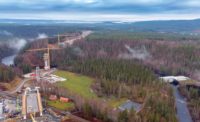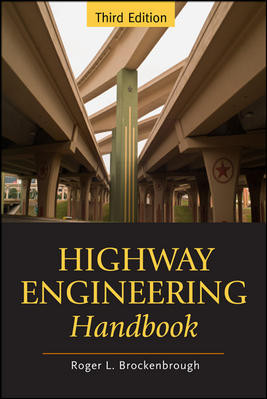Requirements for 3D Models Increasing in Road and Bridge Bid Documents

Transportation agencies and firms say 3D models will make inroads in bid documents.
GRAPHIC COURTESY OF HDR
Transportation agencies, including the Federal Highway Administration and several state DOTs, are pushing forward with making Building Information Modeling a bid deliverable and binding reference document for projects. The American Association of State Highway and Transportation Officials is also working on a BIM standard for bridges in conjunction with 15 states.
“The market is exploding,” says Connor Christian, transportation BIM program manager with HDR, which is leading the BIM standard project, due for completion in 2022. “I can think of a dozen projects only using 3D models.”
While BIM has been used for years to provide extra information and visualizations on road and bridge projects, 2D paper plans have remained the deliverable and the binding reference, says Christian.
The Iowa Dept. of Transportation launched a feasibility study and pilot project that included a 3D model for a three-span curved steel plate girder bridge. “The pilot project is currently under construction. Based on early feedback, the contractor indicated having to invest in additional software to take full advantages of all the features offered by the BIM model,” says Ahmad Abu-Hawash, chief structural engineer. “Free software was available to all potential bidders during bidding but with limited features. Also, they were having difficulties in generating prints for specific views. As the software improves and contractors gain experience, these issues will be resolved,” he adds.
Getting Up to Speed
Scott Fernald, implementation manager with Granite Construction, agreed that there is a learning curve. “So far there’s been, as with anything change, some hesitation,” he says. “So many are still on paper-based systems. Projects are designed digitally but regenerated in 2D for advertisement, bid and construction. People are used to that on the civil side.”
But the potential benefits include reducing redundancies and increasing efficiencies, he adds. “My background is in trying to reduce redundancies in construction—verifying quantities, takeoffs. My passion is to find some way to facilitate or expedite the process.”
3D models can potentially do that, says George Lukes, standards and design engineer with the Utah Dept. of Transportation. “Data schema represents anything you could build,” he notes. “When I am a bridge designer, I want to hand that over to a contractor so he can bid on it; I don’t need the entire schema. I need specifics for bridges. Model view definitions are what we exchange with each other. They represent something very specific. We’re developing two exchanges. One is the design to give to the contractor. The other is a design for the fabricator for that part of the bridge.”
Abu-Hawash says the AASHTO working group identified Industry Foundation Classes as the data exchange schema for BIM for bridges and structures. “We are working on developing national standards and guidelines to facilitate its use by bridge owners and other stakeholders. This includes establishing requirements for key data exchanges for the life cycle of the structure’s model. Another important task is performing an economic analysis to validate the return on investment, which is an important step to get buy-in from stakeholders.”
The goal of ending the traditional reliance on paper plans includes bringing added value in the form of higher quality, less-expensive changes and better coordination, says Christian. Adds Abu-Hawash: “Another major benefit is asset management. The model will be continually updated throughout the life cycle of the structure, from preliminary design through in-service inspections.”




